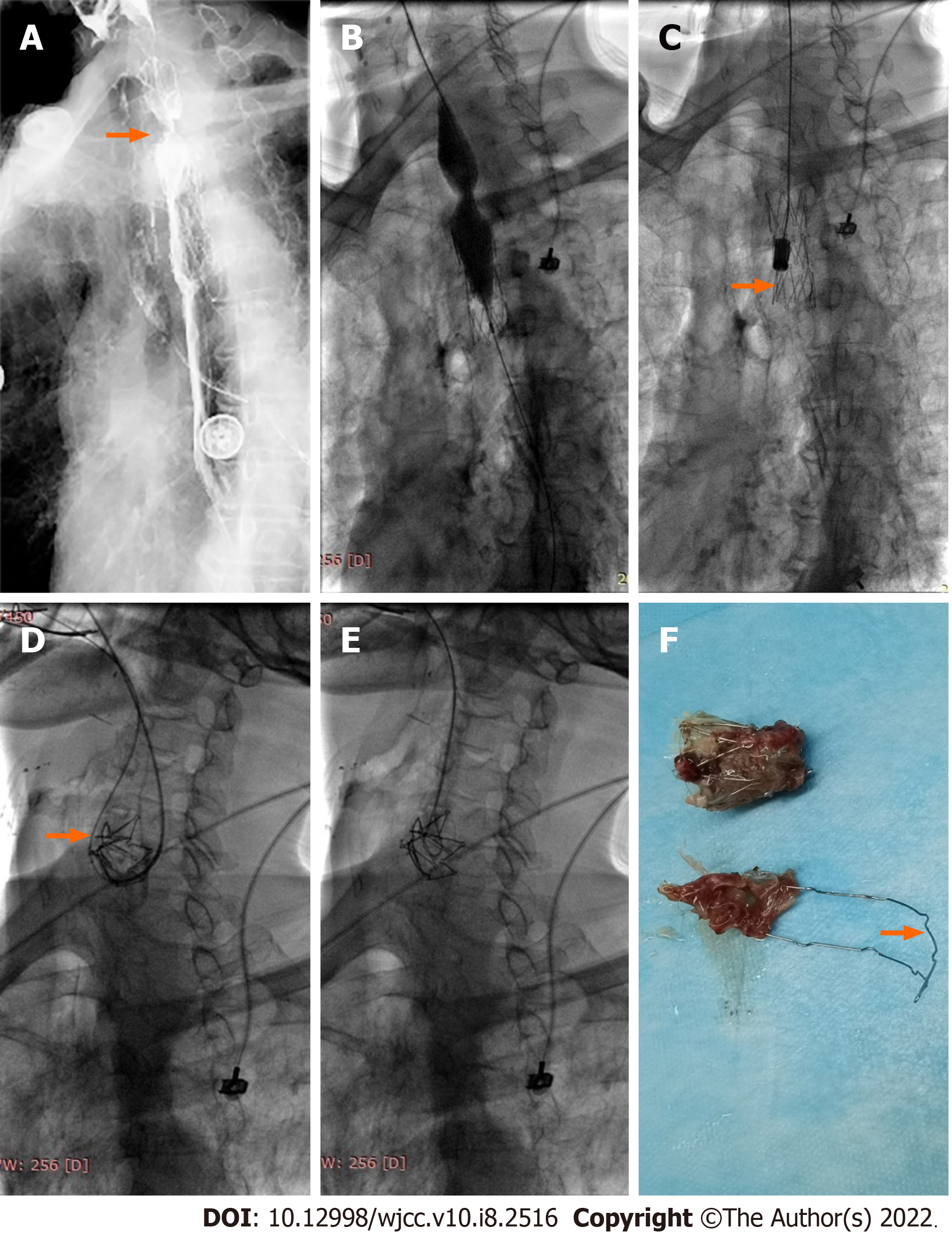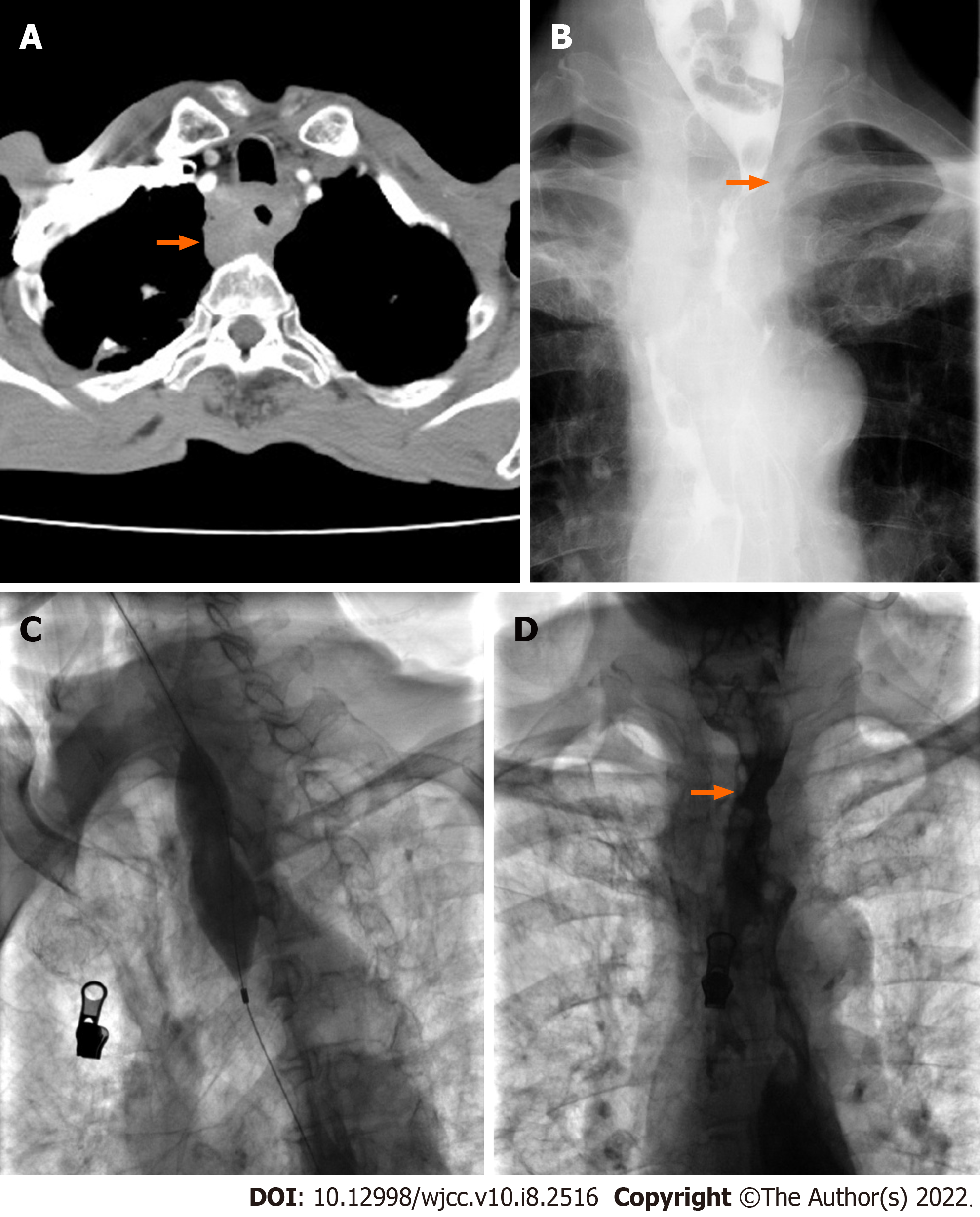Copyright
©The Author(s) 2022.
World J Clin Cases. Mar 16, 2022; 10(8): 2516-2521
Published online Mar 16, 2022. doi: 10.12998/wjcc.v10.i8.2516
Published online Mar 16, 2022. doi: 10.12998/wjcc.v10.i8.2516
Figure 1 Examination before esophagectomy 21 mo ago.
A: Esophagography showed that the tumor was located in the middle and lower part of the esophagus; B: A chest contrast-enhanced computed tomography scan showed thickened esophageal wall; C: Esophageal gastroscopy examination was performed and biopsy pathology confirmed esophageal squamous cell carcinoma.
Figure 2 Balloon dilation and stent removal performed 13.
5 mo after stenting. A: Esophagography showed severe stenosis (arrow) above the proximal stent; B: A 20 mm in diameter and 40 mm in length balloon catheter was introduced to dilate the stenotic segment; C: A stent removal sheath was introduced and then a removal hook (arrow) was placed in the lower part of the stent, stent fracture occurred and only one-third of the stent was retrieved; D: A 0.035-inch guidewire was introduced and passed over the remaining fractured stent and looped back from the stent to the mouth (arrow); E: A suction tube was introduced through the guidewire and then the guidewire was grabbed, acting like a “lasso” on tightening; F: The fractured stent was successfully removed and the strut was deformed (arrow).
Figure 3 Balloon dilation performed approximately 40 d after stent removal.
A: Chest enhanced computed tomography examination showed obvious thickened esophageal wall (arrow); B: Esophagography showed severe stenosis (arrow) in the proximal part of the esophagus. C: A 28 mm in diameter and 40 mm in length big balloon catheter was used to dilate the stenotic section; D: Esophagography showed that the stenosis (arrow) disappeared after dilation.
- Citation: Bi YH, Ren JZ, Li JD, Han XW. Fluoroscopic removal of fractured, retained, embedded Z self-expanding metal stent using a guidewire lasso technique: A case report. World J Clin Cases 2022; 10(8): 2516-2521
- URL: https://www.wjgnet.com/2307-8960/full/v10/i8/2516.htm
- DOI: https://dx.doi.org/10.12998/wjcc.v10.i8.2516











